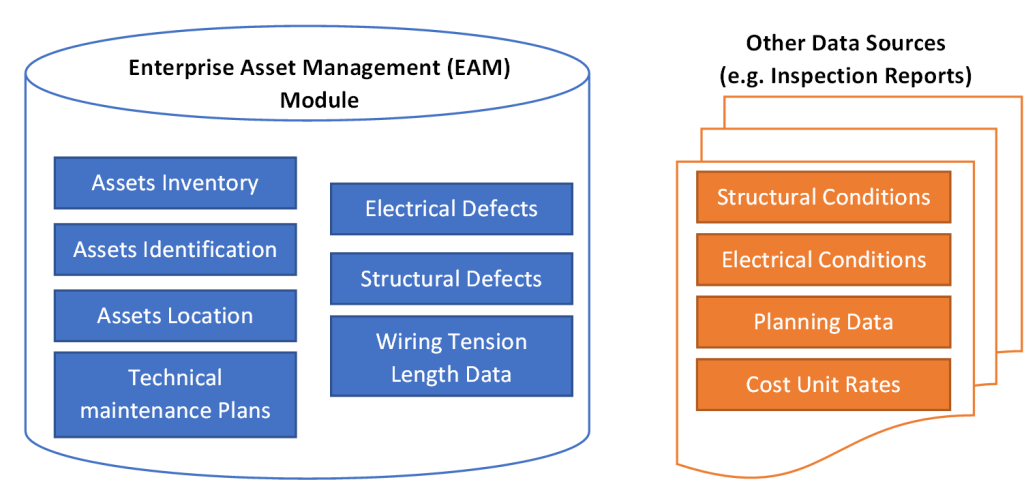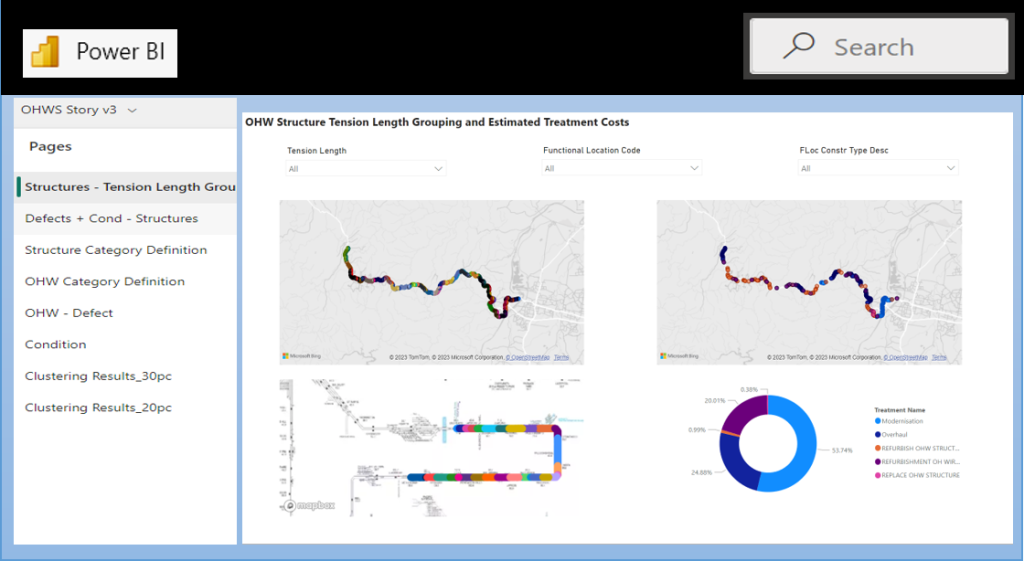Optimising Multi-Disciplinary Assets: Overhead Wiring System: Case Study
The Challenge
One of the major rail operators in Australia manages a network with hundreds of kilometres of overhead wiring (OHW). Overhead wiring systems are used in rail to provide electrical power to trains or trams. These systems consist of overhead wires that are strung along the railway track, supporting structures, electrical power sources, and transformers, among other system components.
The challenge was to strategically plan interventions, renewal, and modernization of the overhead wiring system in the substantial rail network. The system consists of various components and is managed under different engineering discipline strategies, resulting in complexity in integrating asset lifecycles. Lack of integrated planning across disciplines, corridor access and delivery constraints further contributed to the problem.
First Steps
The first step was to define the challenges through workshops with asset strategy managers, planners, field personnel, and other stakeholders. The challenges of managing different disciplines, duplication of efforts, corridor access, and constraints on delivery capacity were highlighted during these workshops.
Next, we leveraged our data analysis capability to delve deep into the multidisciplinary nature of the overhead wiring system to understand the diverse range of inputs required from various disciplines.
One key challenge was identifying the clustering entity for intervention planning. The “Wiring Tension Length” was found to be the most practical clustering entity, it was used to cluster electric wires that are linear and structures that are non-linear.
Unleashing the Power of Data
Quarterbac’s cutting-edge data analysis capability enabled the client make use of their vast datasets. Various datasets were collected and analysed, including asset inventory, defects and condition data, and asset location coordinates, among other datasets as shown in the schematic below. Coupled with our business intelligence dashboards, the data was used to present a clear and comprehensive view of the assets, enabling the team to obtain valuable insights and make informed decisions.

Available Structural and Electrical Datasets
Solution
The solution involved an integrated, multidisciplinary approach to strategic planning. The approach consisted of several steps:
- Data Collection and Analysis: Collecting data on asset inventory, defects, condition, and location coordinates.
- Identify best clustering entity: Initially considering Kilometrage, it was found that “Wiring Tension Length” was the most practical clustering entity for planning electrical and civil interventions.
- Select rail network segment with best data: Assessing the data availability across different rail lines and selecting the segment with the least data gaps for building a predictive lifecycle model.
- Build predictive model to generate interventions: Developing a lifecycle model based on the current assets’ condition and degradation profile to predict future changes in condition.
- Cluster assets and components: Categorizing the assets and components based on their condition within each Wiring Tension Length cluster and determining cluster-level intervention decisions.
- Visualise Scenario Outputs: Creating BI dashboards to analyse data, identify gaps, and present the results in a visual manner.
Results
The results of this approach included the ability to predict ‘fit for purpose’ interventions for discrete assets in the long-term planning horizon. By aggregating assets and components under Wiring Tension Length, Cluster-level intervention decisions could be made based on the conditions of structures and electrical components. Different scenarios were examined, and sensitivity analysis was performed to balance predicted conditions and budget constraints.
Business Intelligence (BI) dashboards provided a visual representation of the condition data, modelling outcomes, and recommended actions for each Wiring Tension Length Cluster, allowing for easy identification of areas requiring attention and comparison of various scenarios.


Quarterbac’s Way
This case study presents how we:
- Used available data to inform strategic asset planning.
- Utilised multidisciplinary knowledge and expertise.
- Developed decision logic and rules that are repeatable, traceable, flexible, and suitable for sensitivity analysis.

Are you ready to revolutionize your asset planning?
Our cutting-edge data analysis capability is here to propel your organization to new heights. With our integrated approach and multidisciplinary expertise, we unleash the power of data to strategically plan interventions, renewals, and modernizations in all asset classes, as demonstrated by this case study on overhead wiring systems. Say goodbye to inefficiencies and duplication of efforts as our innovative solutions provide evidence-based inputs and realistic deliverability understanding.
Our business intelligence dashboards present clear and comprehensive asset stories, enabling you to make informed decisions and optimize your resources. It’s time to embrace the future of rail network planning with our data-driven insights. Unlock your potential and realise efficiency and success.
